Mexico and Central America
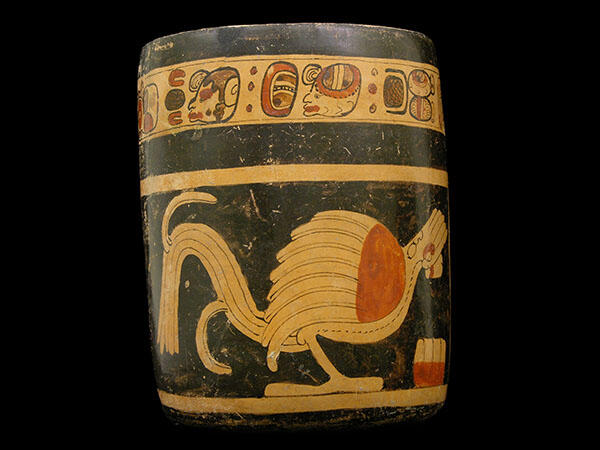 Collections from Central America, including parts of the Caribbean, account for nearly 20% of the Peabody’s collection. The Peabody Museum has conducted excavations and explorations in Mexico and Central America almost from its first decade and include objects created by Mayan and Aztec people from sites in Mexico, Honduras, and Nicaragua. The collections also include colonial and contemporary objects such as textiles and masks, crafted by artists in Mexico and other regions in Central America.
Collections from Central America, including parts of the Caribbean, account for nearly 20% of the Peabody’s collection. The Peabody Museum has conducted excavations and explorations in Mexico and Central America almost from its first decade and include objects created by Mayan and Aztec people from sites in Mexico, Honduras, and Nicaragua. The collections also include colonial and contemporary objects such as textiles and masks, crafted by artists in Mexico and other regions in Central America.
Interested in learning more about the collections?
Check out some highlights below, or search for specific collections in the database
Highlights from the Mexican and Central American Collections
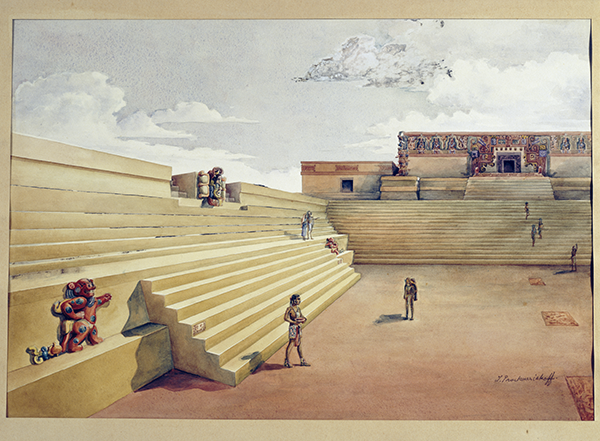
Paintings and drawings depicting the monumental architecture and art of Mesoamerica by scholars and artists Tatiana Proskouriakoff, Antonio Tejeda, and Jean Charlot
Painting "The Jaquar Stairway" in Copan, Honduras, by Tatiana Proskouriakoff. Gift of the Carnegie Institution of Washington, 50-63-20/13323.
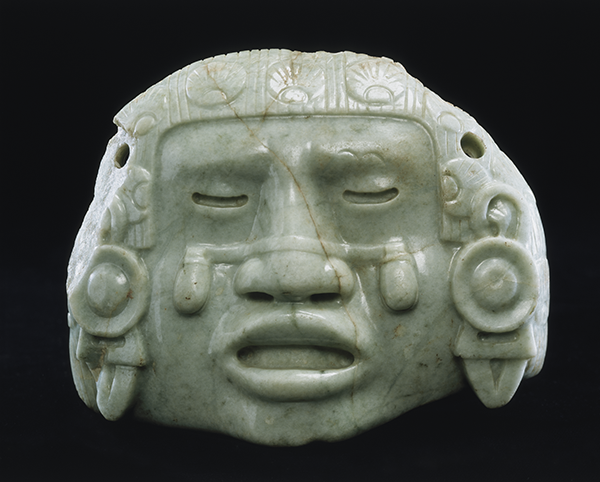
Figurines and other art from Mexico dating from the fourteenth through sixteenth centuries.
Carved jadeite effigy mask of Coyolxauhqui , from Mexico circa A.D. 1500. 28-40-20/C10108.
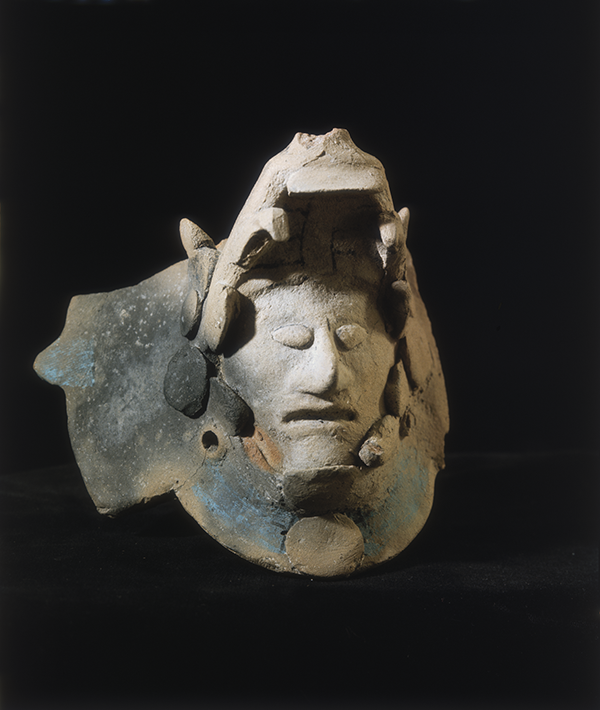
Extensive archaeological and osteological collections including a large and diverse collection of objects and art from Copan in Honduras; Labna and Chichen Itza in Mexico; and Altar de Sacrificios, Kaminaljuyu, Seibal, Holmul, Piedras Negras and Uaxactun in Guatemala. Additionally, ceramic type collections from Altar de Sacificios in Guatemala, and Barton Ramie in Belize, among others, are included in the collections.
Ceramic figurine featuring a human head in the jaw of a serpent, from the ancient Maya city of Chichen Itza, Yucatan, Mexico. 07-7-20/C4716.
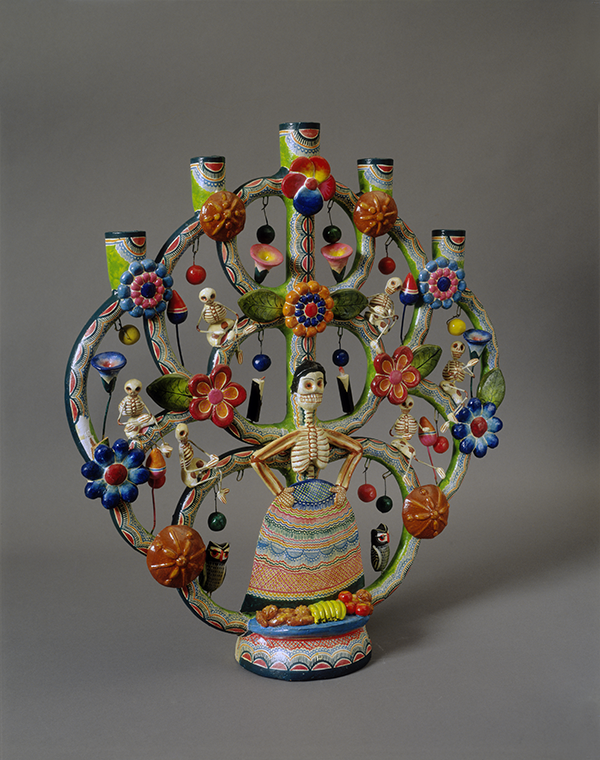
Ceramic art created by numerous twentieth-century Puebla artists including Alfonso Castillo and Teodora Blanco in the Alice Melvin Collection of modern Mexican folk art
Ceramic "Day of the dead" candelabra by Alfonso Castillo circa 1980-1989. 993-24-20/27396.
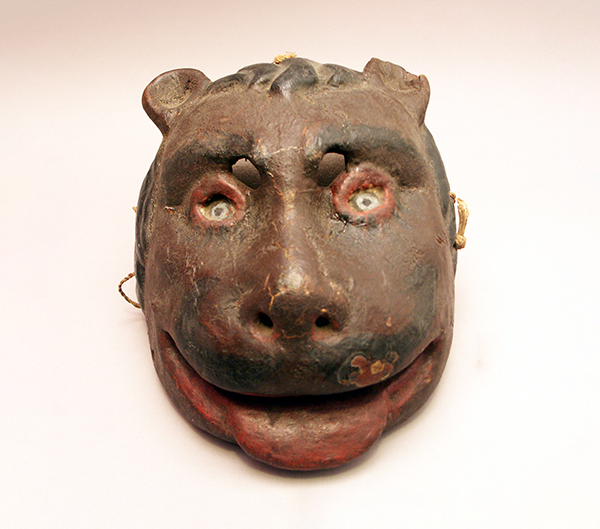
Late nineteenth and twentieth-century carved and painted masks and dance regalia from Mexico and Guatemala.
Carved jaguar dance mask, used in Baile del Venado (deer dance) from San Cristóbal Totonicapán, Guatemala. 38-38-20/5272.
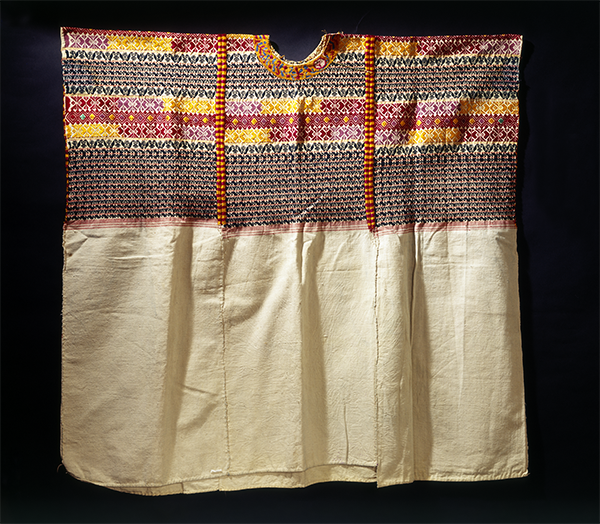
Late nineteenth-century and twentieth-century clothing and other textiles from Guatemala, Honduras, and Panama.
Maya huipil (woven and embroidered blouse) from Quetzaltenango, Guatemala. 32-37-20/91